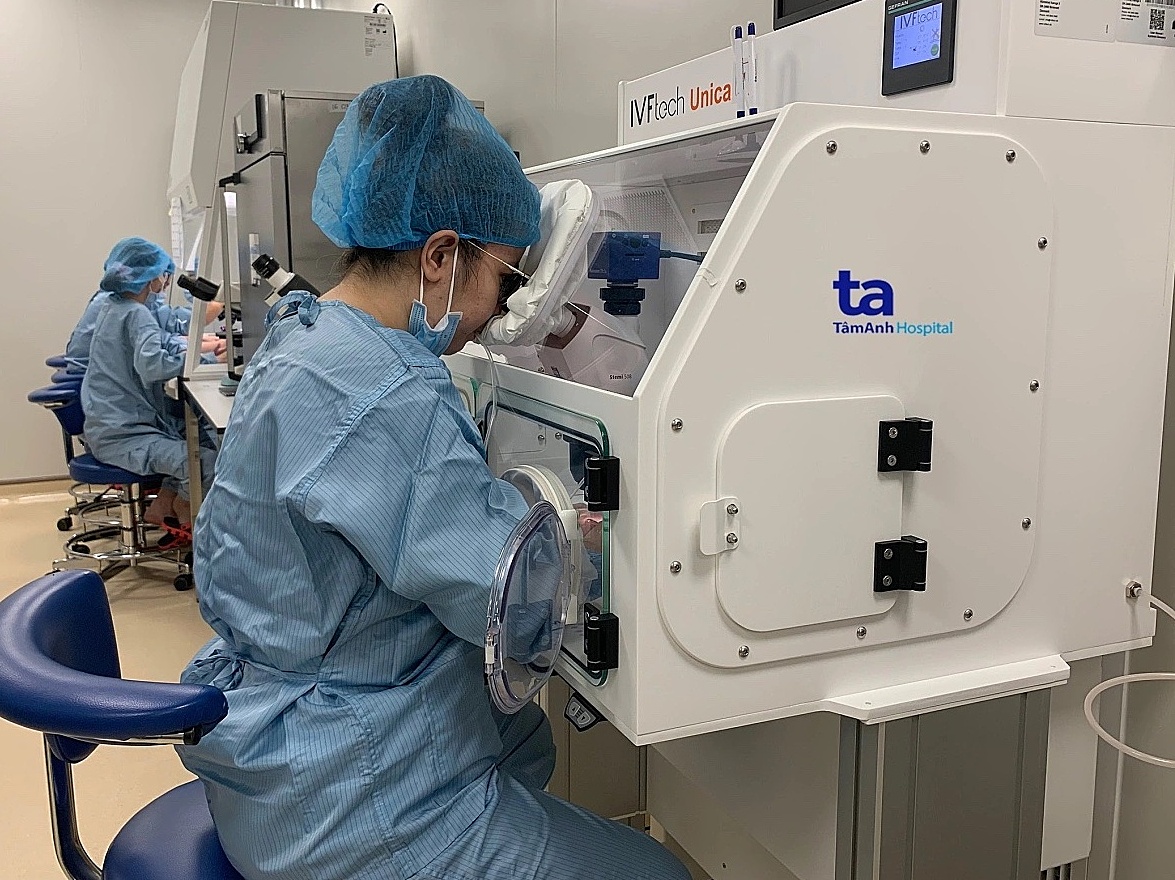Does this method help reduce the risk of having a child with birth defects? (Thu Trang, Phu Tho)
Answer:
Birth defects are structural or functional abnormalities that occur during fetal development and can be detected before, during, or after birth. According to the World Health Organization (WHO), about 6% of babies born have at least one birth defect. In the group of women undergoing IVF, this rate is even higher due to declining egg quality.
Preimplantation genetic testing (PGT) is a modern genetic testing technique used in IVF to detect chromosomal abnormalities and some genetic disorders such as Down syndrome. This is an important step forward in the field of assisted reproduction, contributing to increasing the rate of implantation and the birth of healthy babies in infertile couples.
PGT helps doctors select embryos with normal genes for transfer into the patient's uterus, reducing the risk of miscarriage, stillbirth, and the birth of children with genetic birth defects. However, it cannot guarantee that the fetus will be completely free of birth defects or medical conditions that may arise during pregnancy.
There are many types of preimplantation genetic testing, including PGT-A for chromosomal aneuploidy testing, PGT-M for single-gene disease screening, or PGT-SR for structural chromosomal abnormality screening. Each type of test is indicated based on the specific case of each patient. Down syndrome is one of the common genetic disorders related to chromosome 21. To avoid the risk of having a child with this syndrome, you can undergo PGT-A. The heritability of Down syndrome is about 5%.
 |
An embryologist uses a microscope and specialized tools to take a few cells from the outer layer of the embryo for DNA analysis. Photo: *Tam Anh General Hospital* |
At the Center for Reproductive Support, Tam Anh General Hospital, next-generation gene sequencing (NGS) technology is applied in embryo genetic screening to simultaneously detect chromosomal abnormalities (aneuploidy) and microstructural abnormalities, including deletions and small duplications on each chromosome at the blastocyst stage (day 5). Thanks to this, doctors can accurately select embryos that are both morphologically good and genetically stable for transfer into the uterus, increasing the rate of implantation and healthy pregnancies, reducing the risk of early miscarriage, abnormal fetuses, or babies born with severe genetic diseases.
When embryo screening is indicated, you and your spouse will be consulted by doctors about the detection capabilities, benefits and risks, as well as limitations of the tests. Embryo screening is part of ensuring reproductive safety and does not replace the entire pregnancy health monitoring process. Once pregnant, you need to be closely monitored for a safe pregnancy so that the fetus can develop healthily.
Doctor Nguyen Xuan Anh Duy
Center for Reproductive Support
Tam Anh General Hospital
| Readers can submit questions about infertility here for doctors to answer. |












